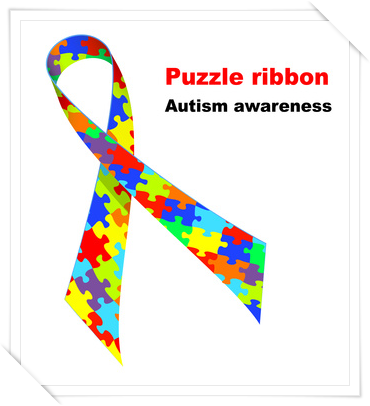Can Physical Therapy Help Treat Autism?
 April is National Autism Awareness Month. Autism is a disorder of neural development characterized by impaired social interaction and communication. It can be associated with repetitive behavior such as hand-flapping or rocking. Low muscle tone and poor motor control can also be present. These impairments result in the inability to perform day to day functions and 'fit in' with society. Physical therapy plays an important role in the management of children with autism, especially in the early years by maintaining or improving the following:
April is National Autism Awareness Month. Autism is a disorder of neural development characterized by impaired social interaction and communication. It can be associated with repetitive behavior such as hand-flapping or rocking. Low muscle tone and poor motor control can also be present. These impairments result in the inability to perform day to day functions and 'fit in' with society. Physical therapy plays an important role in the management of children with autism, especially in the early years by maintaining or improving the following:
• Muscle strength
• Coordination
• Daily living skills including sitting, standing and rolling.
Physical therapists are highly trained professionals in the field of rehabilitation and function. A physical therapist can help both adults and children cope with the physical manifestations of autism, empowering them to interact better with the people and the environment around them.
 The physical therapist will not only teach, but also participate in a number of activities to help the child learn more effectively. Over a short period of time, the therapist is able to gain the trust and confidence of the child to facilitate results. All treatments are provided in a safe, controlled environment like a hospital, clinic, school or the child's home.
The physical therapist will not only teach, but also participate in a number of activities to help the child learn more effectively. Over a short period of time, the therapist is able to gain the trust and confidence of the child to facilitate results. All treatments are provided in a safe, controlled environment like a hospital, clinic, school or the child's home.
One of the objectives of therapy is the improvement of the child's social skills using group exercise and games involving other children. As they get older, the children are involved in more one-on-one training. In some situations, group therapy with other patients with autism is appropriate. In addition, therapy helps improve posture and addresses bone and joint dysfunction. The therapist may use methods such as dance therapy, aquatic therapy (exercises in a swimming pool) and home exercise routines to improve the following:
• Postural control and stability
• Sensory perception
• Coordination
 Working with children with autism requires a team effort between the physical therapist and family members. You can expect the therapist to be actively involved in teaching best practices to the parents and caregivers. This helps maintain continuity of care outside the clinic and in the child's home.
Working with children with autism requires a team effort between the physical therapist and family members. You can expect the therapist to be actively involved in teaching best practices to the parents and caregivers. This helps maintain continuity of care outside the clinic and in the child's home.
Since autism impairs a child's movement and social skills, it's common for the child to experience a great deal of frustration in social situations. This is exactly why parents and caregivers play an important, supportive role for the child.
The good news is that physical therapists, with extensive training in the body's neurological and muscular system, can make things easier for the child and the family. Some physical therapists take advanced training courses and specialize in the treatment of children and adults with autism. Regardless, the sooner a physical therapist is involved, the better. As the leading physical therapy providers in the community, ww are committed to helping children (and adults) with autism live happy, healthy and successful lives. Call us today to learn more.